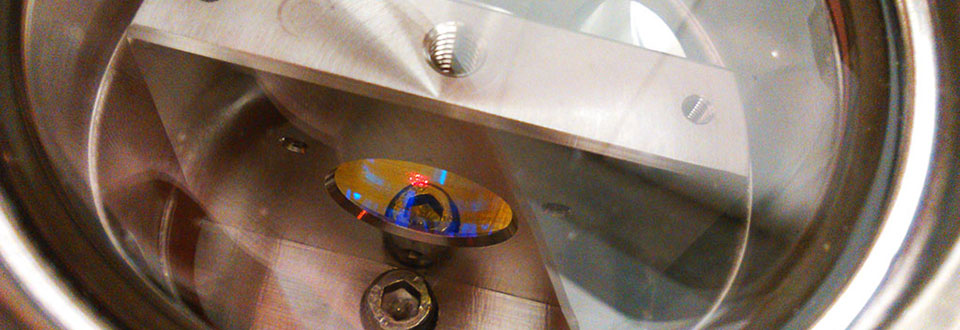GINGERino

Ring laser gyroscopes are, at present, the most precise sensors of absolute angular velocity. They are essential in estimating rotation rates relative to the local inertial frame in many contexts ranging from inertial guidance to angle metrology, from geodesy to geophysics, as well to fundamental physics. Large ring laser gyroscopes (with a perimeter of several meters) are capable to measure angular rotations with precision better that a fraction of prad/s, not far from what is necessary for General Relativity tests (about 10−14rad/s). GINGERino, installed at LNGS at the end of September 2014, is a 3.6m side square ring laser. The instrument has been tailored to be the largest possible fitting the area assigned by the laboratory, since large rings have higher sensitivity. Its main objective is to measure the very low frequency rotational motions inside LNGS, in order to show if this is a suitable location for very low noise measurements and General Relativity tests. At the same time it will provide interesting informations for geodesy and geophysics. At the end of the year 2014 the largest part of the apparatus has been installed and the first laser light of the GINGERino ring has been observed.The apparatus is at the moment in a ’commissioning’ phase, improvements of the mechanical parts are in progress, and data taking does take place as well, but not yet in a continuous basis. The apparatus of GINGERino contain as well tilt meters with sensitivity of few nano-rad and seismometers. G-Pisa, a square ring with side length of 1.35m, was our first prototype. It was a transportable device, which has been installed in different locations, with different orien- tations (horizontal, vertical, or aligned with the Earth rotational axis). In 2013 it has been transferred inside LNGS, providing a set of measurements (see our LNGS Report 2013 for details). This first set of measurements suggested a new improved installation, that was recently realised. This new installation has been located inside LNGS, approxi- mately 11 m ( South) far from node B, in a place isolated from human activity, starting at the end of September 2014. The apparatus, named GINGERino, uses the mechanics of G-Pisa, but the dimension of the perimeter has been increased up to 14.4 m, which should provide a factor 7 improvement in sensitivity, and a large suppression of laser systematic effects (backscattering and frequency pulling). The sensitivity of GINGERino is expected to be about 5 × 10−10rad/s/Hz1/2, assuming mirrors with total losses of about 15 ppm, similar to the best set of mirrors we have had so far. GINGERino is a small apparatus compared to the average size of the INFN and LNGS experiments, nevertheless it is composed of several parts and other high sensitivity in- struments are co-located, as tilt meters with nrad resolution and high performance seismometers. These two instruments will improve the knowledge of the behaviour of the location, and will be very helpful in the interpretation of geophysical data. Long term data acquisition is expected to start sometime in 2015, it is a test apparatus, the effort will be concentrated on improving the stability and accuracy, nevertheless the data of GINGERino are of interest for seismology and geodesy. Our experiment is interdisci- plinar. GINGERino is financed by INFN and is one of the prototypes of the experiment G-GranSasso.